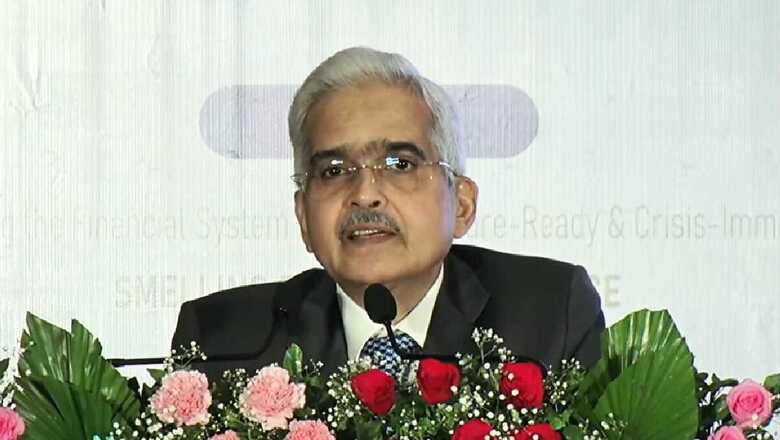
views
The Reserve Bank recently came out with guidelines on default loss guarantee (DLG) in digital lending, a move aimed at ensuring the orderly development of the credit delivery system.
Digital lending is a remote and automated lending process, largely by use of seamless digital technologies for customer acquisition, credit assessment, loan
approval, disbursement, recovery, and associated customer service.
DLG is a contractual arrangement between a regulated entity (RE) and an entity meeting prescribed norms, under which the latter guarantees to compensate the RE, loss due to default up to a certain percentage of the loan portfolio specified upfront.
RE refers to entities, like banks and NBFCs, which are regulated by the RBI.
As per the guidelines, a RE may enter into DLG arrangements only with a Lending Service Provider (LSP)3/ other RE with which it has entered into an outsourcing (LSP) arrangement.
“DLG arrangements must be backed by an explicit legally enforceable contract between the RE and the DLG provider,” it said.
Last year, the Reserve Bank issued the regulatory framework for digital lending.
With a view to further promoting responsible innovation and prudent risk management, it has been decided to issue guidelines on Default Loss Guarantee arrangements in Digital Lending, RBI Governor Shaktikanta Das said while announcing the monetary policy earlier in the day.
This, he said, will further facilitate the orderly development of the digital lending ecosystem and enhance credit penetration in the economy.
The guidelines further said RE should ensure that the total amount of DLG cover on any outstanding portfolio, which is specified upfront should not exceed 5 per cent of the amount of that loan portfolio.
“In case of implicit guarantee arrangements, the DLG provider shall not bear performance risk of more than the equivalent amount of five per cent of the underlying loan portfolio,” it added.
It also said recognition of individual loan assets in the portfolio as NPA and consequent provisioning will be the responsibility of the RE.
Also, the REs will have put in place a Board approved policy before entering into any DLG arrangement.
Navin Surya, chairman, Fintech Convergence Council, said, “The RBI’s circular on Default Loss Guarantee arrangements in digital lending reflects their commitment to fostering innovation while ensuring responsible risk management. By conducting extensive consultations and issuing detailed guidelines separately, the RBI establishes a transparent and comprehensive regulatory framework, promoting trust and confidence in the digital lending ecosystem. This move will not only boost credit penetration but also encourage collaboration between fintech and regulated entities for the benefit of the economy.”
Anand Kumar Bajaj, founder, MD, & CEO, PayNearby, said, “This is yet another comforting and well-meaning guideline from the regulator. Considering the pros and cons of the challenges that the industry was facing, the regulator has once again put the right format on the table, keeping the default loss guarantee (DLG) cover limited to 5%. This ensures that regulated entities (REs) can confidently make sound credit decisions.”
“The inclusion of a 5% cap, along with clear definitions of time in the agreement and the deposit method, exemplifies a commitment to good governance and aligns with regulatory expectations for the industry. This practice ensures absolute clarity and demonstrates compliance with the regulator’s guidelines,” Bajaj added.
Nikunj Agarwal, head, debt & lending alliances, Propelld, said, “This move has been welcomed by most industry participants, as it strikes a balance between innovation and flexibility on one hand, and strong credit on the other by capping the FLDG at 5%. The guidelines will reduce capital requirements for regulated entities, increasing their confidence to partner with LSPs. At the same time, fintech players can leverage digital capabilities for faster, cheaper, and more convenient loans, enhancing customer experience.”
However, Agarwal added that it is important for industry participants not to over-innovate and let the market grow while taking benefits from the guidelines.
“The RBI’s decision is a positive step towards promoting innovation in the fintech industry, and it is up to the industry to use this opportunity to create value for customers and drive growth,” Agarwal added,




















Comments
0 comment